Action Management Catalogue
Overview
The Action Management Catalogue shows you a list of all active or finished Action Managements.
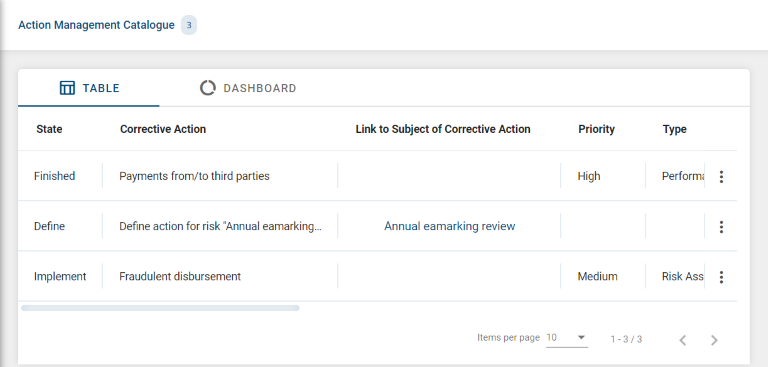
Each catalogue entry represents an Action Management process instance.
From the context menu  of each catalogue entry, you are able to:
of each catalogue entry, you are able to:
See the full Details.
Access to the Audit Trail.

The Dashboard view offers a chart for each facet that is available and shown as a multi-value selection facet.
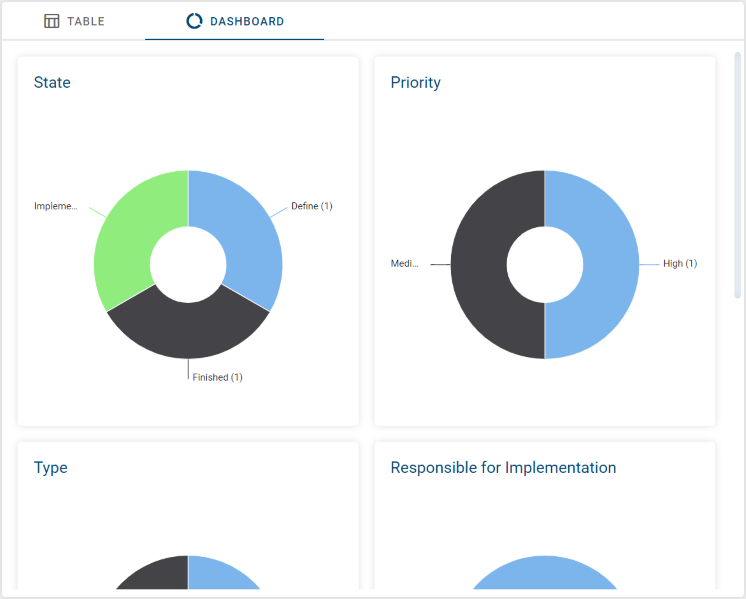
How can I access the Action Management Catalogue?
Click on Action Management Catalogue inside the Side Navigation Bar.
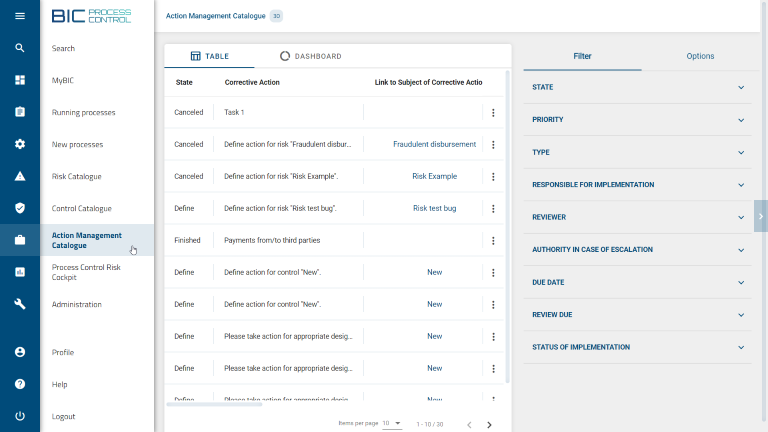
How the role of a user changes the Action Managements I can see?
The Action Management Catalogue shows you entries based on your assigned role.
As a |
You can see |
|---|---|
|
|
|
|
How can I sort entries in the Action Management Catalogue?
You have the option to sort catalogue entries by column headers. When holding the mouse pointer over a specific column header, if the column is sortable, a clickable icon with the shape of an arrow appears  .
.
By clicking on the arrow, the selected column is sorted. Depending on the data type, columns can be sorted alphabetically (A to Z) or by date (oldest/earliest dates).

The sorting order can be inverted by clicking again on the arrow.

The direction of the arrow points upwards or downwards in relation to the current sorting order. The last selected column is marked with a static arrow.
How are the charts sorted inside the Dashboard view?
The charts are sorted following the same order as the facets available in the Filter menu.
Based on which data the charts are calculated?
The data is based on Action Managements that you can see according to your role and on the active filter facets.
How can I filter catalogue entries?
If you enter the Action Management Catalogue, you will find the Filter menu on the right side. The Filter shows you a list of facets based on your catalogue entries.
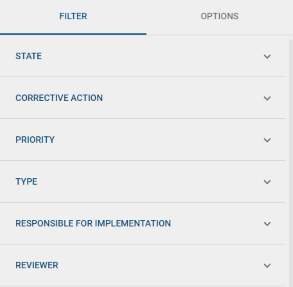
Facets can be expanded or collapsed by clicking on them. Among the different filtering options, you can find multi-selection pickers and date pickers.
Multi-selection pickers:
- Multi-selection pickers are shown in two different ways, depending on their number of facet values:
simple multi-selection facet
quick-filter multi-selection facet
If the facet contains more than 15 entries it will be rendered as quick-filter multi-selection facet.
Simple multi-selection facet
When you open a simple multi-selection facet, you can see the total number of how many catalogue entries match each filter value.
Filter values are sorted in descending order from the highest number of matching hits to the lowest. If two or more filter values happen to have the same number of hits, then filters are alphabetically sorted in ascending order.
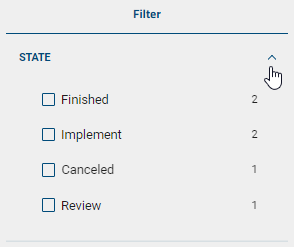
When you select a facet value, the shown number of matching hits for each facet value and the Action Management Catalogue view are updated accordingly.
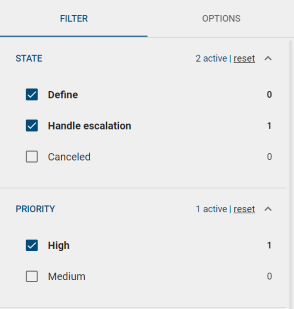
Multiple selections can be undone by clicking again on the selected facet values or by using the remove option.
Each facet header indicates the number of active facet values that are used to filter the Action Management Catalogue. For example,  for RESPONSIBLE FOR IMPLEMENTATION.
for RESPONSIBLE FOR IMPLEMENTATION.
Quick-filter multi-selection facet
In difference to the simple multi-selection facet, the quick-filter variant is intended to manage a long list of facet values. In order to achieve that, the facet contains of two components:
An input field, that allows to quick-filter the list of facet values
A rectangle with a fixed height that contain a scrollable list of the facet values.
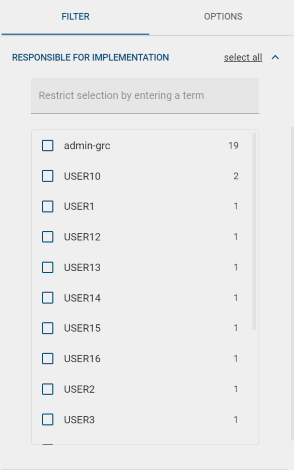
The basic behavior of the list of facet values is the same like for the simple representation. In addition the quick-filter variant offers a select all option, which will select all currently visible entries.
By selecting a value it is positioned at the top of the list and the number of hits displayed in the Action Management Catalogue view is updated accordingly.
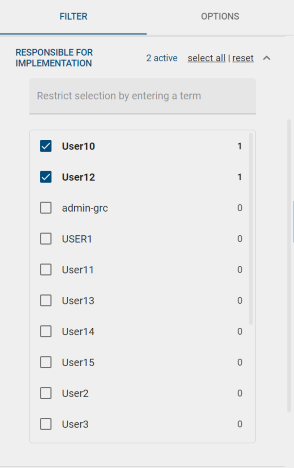
Date pickers. You have the option to filter by:
All values, that are after or equal to a given Start date
All values, that are before or equal to a given End date
All values, that are after or equal to a given Start date and before or equal to a given End date
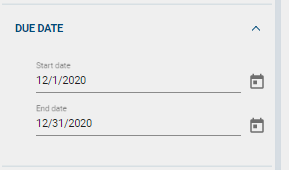
How can I export case documents from the Action Management Catalogue?
On the right side of the catalogue there is the Options menu bar that offers an export option, creating a downloadable .XLSX file format.

By clicking on EXPORT you download the complete Action Management Catalogue of all case documents that are visible to you.